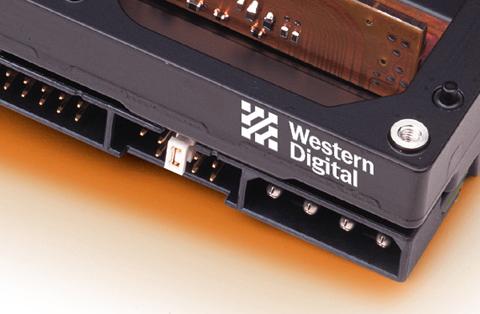
Photo by kind permission of Western Digital.
IBM Deskstar 25GP & Western Digital Caviar GMR
At 3.74 billion bits per square inch, these 20GB and 25GB drives set yet another areal density world record for IBM. This, in turn, pushed 5400 RPM data transfer rates up to equal that of 1998's 7200 RPM drives — in fact, 195Mbit/sec was faster than a Series 1 Cheetah. (We should not ignore the lower access time, lower latency, and SCSI multi-tasking advantages of 10,000 RPM Cheetah-class drives; just the same, the Deskstar 25GP was impressive.)
Generally, IBM's ground-breaking leading edge drives were made in small quantities and quite expensive. It was IBM's still high-tech but bargain priced second generation drives that usually sold in big numbers. In other words, in the real world you were more likely to see the older Deskstar 16XP than these.
As usual with the WD/IBM combination drives, the Western Digital range had the same drives in different capacities. At least for us here at Red Hill, it was the smallest Western Digital drive that was the only volume mover. 20GB was huge at the time and fairly expensive. It made more sense, if you were going for something that big, to go the whole hog and get something in 7200 RPM (like an 18GB Expert). Conversely, if cost was more important than performance, then a 17GB Seagate U8 or (a little later on) a 20GB Samsung was the answer.
| Performance | 1.20 | Reliability | AAX |
| Data rate | 195.6 Mbit/sec | Spin rate | 5400 RPM |
| Seek time | 9.0ms | Buffer | 512k |
| Platter capacity | 5.0GB | Interface | ATA-66 |
| AC210400 | 10.4GB | 4 MR heads | ** |
| AC315300 | 15.3GB | 6 MR heads | |
| AC420400 | 20.4GB | 8 MR heads | |
| DJNA-352030 | 20.4GB | 6 MR heads | |
| DJNA-352500 | 25.6GB | 8 MR heads |